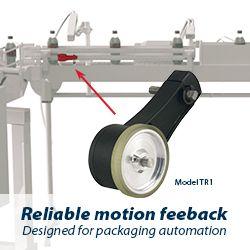What's Happening in Robotics? Five Trends to Watch
Ford's new robots can build cars, make coffee
Standardizing Collaborative Robots: What is ISO/TS 15066?
Logistic companies Swisslog, Dematic, Egemin and Intelligrated have all been Acquired
Development of Battery-Free Multi-Rotation Absolute Encoder
China's Midea buys nearly half of German robotics firm Kuka
Robots, Jobs and Productivity in the Manufacturing Industry
Aerospace: KUKA Omnimove Delivers Gigantic Aircraft Components With Millimeter Precision
Future Focus: Robotic Automation and Generation Z
Types of Robotic Actuators
Robotic Pickers and Forklifts
Foxconn Replaces 60,000 Labourers With Robots in China
A Soft Control Architecture: Breakthrough in Hard Real-Time Design for Complex Systems
China's Big Bid For Germany's Industry 4.0 Technology
Developing Manufacturing Workers Who Are Job-Ready on Day One
Records 1051 to 1065 of 1241
First | Previous | Next | Last
Factory Automation - Featured Product

